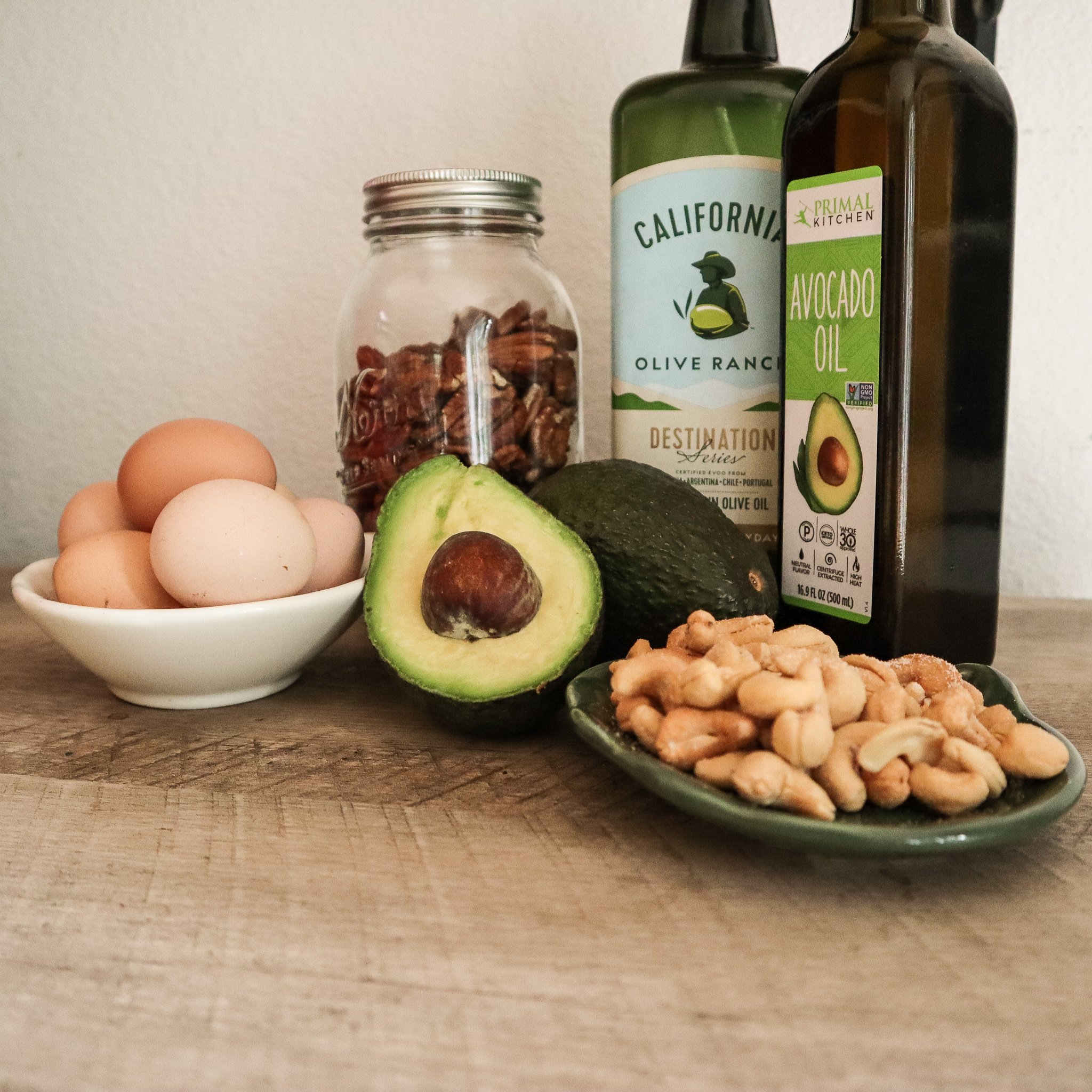Macros Part 3: Fats and How They Help Your Stamina
It’s 3 PM on a Thursday afternoon, you grab coffee #4, or was it 5? and the brain fog is real. Halfway between craving a nap and a snickers bar, you’re wracking your tired brain for some energy and focus. Sound familiar? This is the all-too-common plight of many. However, instead of telling you, “Drink more water, less coffee, less sugar, etc. etc.” I’d like to show you the incredible use of fats and how they can transform your energy levels from a high-intensity roller coaster to a lovely boat ride down a lazy river.
First, a little bit of history:
In the 1990s, fats became a highly stigmatized food. Labels up and down the grocery store aisles declared they were ‘fat free,’ and therefore very healthy for you. As years went on, it became clear that the removal of fat from our diets wasn’t exactly helpful. Now, fat is hailed as the most effective food for weight loss. But what is the truth? With media marketing 2 extremes, it’s hard to define what is actually truth, and what is a marketing gimmick. Thankfully, the answer is far less complicated and easier to work with when meal planning.
Let’s start with what type of fats exist. There are primarily two types of fats: saturated and unsaturated.
Unsaturated are generally liquid fats such as olive oil, avocado oil, and peanut oil.
Unsaturated fats can be broken into two more categories, monounsaturated and polyunsaturated. Monounsaturated fats include nuts like almonds, and pecans, and seeds like pumpkin and sesame. Polyunsaturated, a very valuable fat, includes foods such as walnuts, flaxseeds, and fish. This is where the very beneficial Omega-3 fats are found.
Saturated fats are saturated with more hydrogen particles and are more solid fats like butter, beef or chicken fats, pepperoni, sausages, and other processed foods.
This is where things get a little more complex. Fats are a critical part of our hormonal and metabolic regulation, but as we’ve often heard, some fats are bad for us and some good. Many people say all beef fats and animal fats are bad for our heart, but this is where I disagree. We need at least 50g-70g of a mix of unsaturated and saturated fats to balance our hormones and energy levels. Each type of fat provides a different kind of amino and fatty acid that helps our liver to detox and filter the foods coming into our body. If you get too much of one kind and not enough of another it can stress the liver and slow digestion.
We see that not getting enough fats can be damaging to the liver, what happens to our body when we do get enough? Our energy levels out and we stop experiencing the afternoon crash, our hormones get a chance to regulate and women experience a smoother monthly cycle. Our body also starts to repair cell damage and our skin gets brighter. We have less brain fog, and better focus. There’s lots of benefits to getting a diverse amount of fats in your diet.
So how do we do this? First, choose high quality whole-fats ranging from avocado and olive oil and nuts and seeds, to grass-fed butter, and organic meats. Include these in every meal, especially in your breakfast and lunch. Why? Because fats take 5-6 hours to digest and you will have level energy throughout the day. Use the whole-fats in making your meal, then when you plate it, add a tablespoon of nuts, dressing, or a half tablespoon of butter to your plate. This will give you just enough fats to balance you for your day. When you do this for a few weeks to a month, you should be able to experience a notable difference in energy levels and sleep quality.
I hope this helps you understand the value of fat and how to balance it into your every day meals. If you have any questions, comment them below or drop me an email at kristen@apostolicnutrition.com. I’d love to hear from you!
God Bless,
~Kristen

